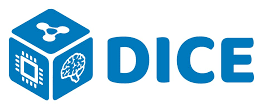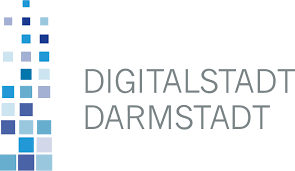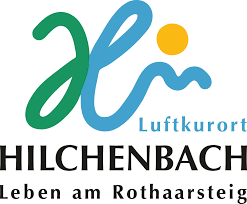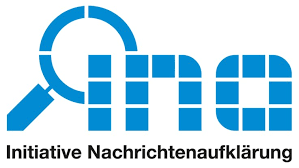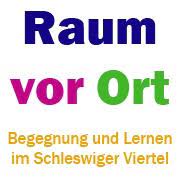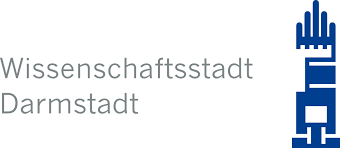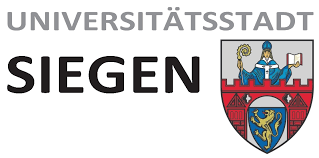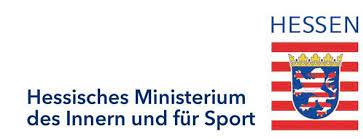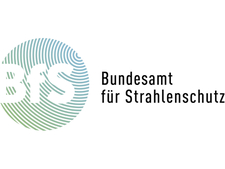
NEBULA: Nutzerzentrierte KI-basierte Erkennung von Fake News und Fehlinformationen (1.7.2022-31.12.2025, BMBF)
 Die Verbreitung falscher und irreführender Informationen – insbesondere über soziale Medien wie TikTok, Twitter, Facebook und Co. – nehmen eine immer größer werdende Relevanz in sicherheitsrelevanten Situationen ein. Gerade im Kontext des Ukrainekriegs spielen derartige Plattformen eine besondere Rolle, indem gefälschte Videos oder Inhalte mit falscher zeitlicher Einordnung in kürzester Zeit viral gehen und somit das Potential für Verunsicherung und Meinungsmanipulation birgen. Problematisch sind dabei nicht nur absichtliche sondern auch unabsichtlich irreführende Informationen.
Die Verbreitung falscher und irreführender Informationen – insbesondere über soziale Medien wie TikTok, Twitter, Facebook und Co. – nehmen eine immer größer werdende Relevanz in sicherheitsrelevanten Situationen ein. Gerade im Kontext des Ukrainekriegs spielen derartige Plattformen eine besondere Rolle, indem gefälschte Videos oder Inhalte mit falscher zeitlicher Einordnung in kürzester Zeit viral gehen und somit das Potential für Verunsicherung und Meinungsmanipulation birgen. Problematisch sind dabei nicht nur absichtliche sondern auch unabsichtlich irreführende Informationen.
Ziel des interdisziplinären Verbundvorhabens NEBULA ist die transparente, KI-basierte Erkennung von Fake News und Fehlinformationen in sicherheitsrelevanten Situationen sowie die zielgruppengerechte Darstellung der Detektionsergebnisse zur Förderung der Medienkompetenz. Die nutzerzentrierten Ansätze adressieren dabei sowohl Behörden und Organisationen mit Sicherheitsaufgaben (BOS) in der akkuraten Lagebilderstellung und Krisenkommunikation als auch vulnerable Personen (z.B. aufgrund ihres Alters, Bildungshintergrunds oder ihrer Sprachkenntnisse) durch partizipative Entwicklung von technischen Unterstützungswerkzeugen. Innerhalb des Projekts entstehen Demonstratore in Form von Smartphone-Apps, Browser-Plugins und Webanwendungen, um Einzelpersonen und Behörden dazu zu befähigen, Fake News und Fehlinformationen selbst erkennen zu können.
Dem Verbundprojekt NEBULA gehören fünf Verbundpartner, acht assoziierte Partner sowie zwei Unterauftragsnehmer an: Neben dem Lehrstuhl Wissenschaft und Technik für Frieden und Sicherheit (PEASEC) der Technischen Universität Darmstadt (Prof. Dr. Dr. Christian Reuter) als Verbunskoordinator sind der Lehrstuhl für Wirtschaftsinformatik und Neue Medien (WiNeMe) der Universität Siegen (Prof. Dr. Volker Wulf), die Professur für Kommunikationswissenschaft mit Schwerpunkt politische Kommunikation der Hochschule Bonn-Rhein-Sieg (Prof. Dr. Hektor Haarkötter), der Lehrstuhl Data Science (DICE) der Universität Paderborn (Prof. Dr. Axel-Cyrille Ngonga Ngomo) sowie die NanoGiants GmbH (Lukas Czarnecki) als Verbundpartner am Projekt beteiligt.
Konsortialpartner
Assoziierte Partner
2025
[BibTeX] [Abstract] [Download PDF]
The ongoing challenge of misinformation on social media motivates ongoing efforts to find effective countermeasures. In this study, we evaluated the potential of personalised nudging to reduce the sharing of misinformation on social media, as personalised support has been successfully applied in other areas of critical information handling. In an online experiment (N = 396) exposing users to social media posts, we assessed the degree of misinformation sharing between groups receiving (1) no nudges, (2) non-personalised nudges, and (3) personalised nudges. Personalisation was based on three psychometric dimensions – general decision-making style, consideration of future consequences, need for cognition – to assign the most appropriate nudge from a pool of five nudges. The results showed significant differences (p {\textless} .05) between all three groups, with the personalised nudge group sharing the least misinformation. Detailed analyses at the nudge level revealed that one nudge was universally effective and two nudges were effective only in their personalised form. The results generally confirm the potential of personalisation, although the effect is limited in scope. These findings shed light on the nuanced results of nudging studies, highlight the benefits of personalisation, and raise ethical considerations regarding the privacy implications of personalisation and those inherent in nudges.
@article{biselli_mitigating_2025,
title = {Mitigating {Misinformation} {Sharing} on {Social} {Media} through {Personalised} {Nudging}},
volume = {9},
url = {https://www.peasec.de/paper/2025/2025_BiselliHartwigReuter_PersonalisedNudges_CSCW.pdf},
doi = {https://doi.org/10.1145/3711034},
abstract = {The ongoing challenge of misinformation on social media motivates ongoing efforts to find effective countermeasures.
In this study, we evaluated the potential of personalised nudging to reduce the sharing of misinformation on social media, as personalised support has been successfully applied in other areas of critical information handling.
In an online experiment (N = 396) exposing users to social media posts, we assessed the degree of misinformation sharing between groups receiving (1) no nudges, (2) non-personalised nudges, and (3) personalised nudges. Personalisation was based on three psychometric dimensions - general decision-making style, consideration of future consequences, need for cognition - to assign the most appropriate nudge from a pool of five nudges.
The results showed significant differences (p {\textless} .05) between all three groups, with the personalised nudge group sharing the least misinformation. Detailed analyses at the nudge level revealed that one nudge was universally effective and two nudges were effective only in their personalised form.
The results generally confirm the potential of personalisation, although the effect is limited in scope.
These findings shed light on the nuanced results of nudging studies, highlight the benefits of personalisation, and raise ethical considerations regarding the privacy implications of personalisation and those inherent in nudges.},
number = {2},
journal = {Proceedings of the ACM: Human Computer Interaction (PACM): Computer-Supported Cooperative Work and Social Computing},
author = {Biselli, Tom and Hartwig, Katrin and Reuter, Christian},
year = {2025},
keywords = {Crisis, HCI, Projekt-NEBULA, A-Paper, Ranking-CORE-A, Projekt-ATHENE-PriVis},
}[BibTeX] [Abstract] [Download PDF]
Misinformation through data visualisation is particularly dangerous because charts are often perceived as objective data representations. While past efforts to counter misinformation have focused on text and, to some extent, images and video, developing user-centred strategies to combat misleading charts remains an unresolved challenge. This study presents a conceptual approach through ChartChecker, a browser-plugin that aims to automatically extract line and bar chart data and detect potentially misleading features such as non-linear axis scales. A participatory design approach was used to develop a user-centred interface to provide transparent, comprehensible information about potentially misleading features in charts. Finally, a think-aloud study (N = 15) with ChartChecker revealed overall satisfaction with the tools’ user interface, comprehensibility, functionality, and usefulness. The results are discussed in terms of improving user engagement, increasing transparency and optimising tools designed to counter misleading information in charts, leading to overarching design implications for user-centred strategies for the visual domain.
@inproceedings{biselli_chartchecker_2025,
series = {{DIS} '25},
title = {{ChartChecker}: {A} {User}-{Centred} {Approach} to {Support} the {Understanding} of {Misleading} {Charts}},
url = {https://www.peasec.de/paper/2025/2025_BiselliHartwigKneisslPouiliotReuter_ChartChecker_DIS.pdf},
doi = {10.1145/3715336.3735784},
abstract = {Misinformation through data visualisation is particularly dangerous because charts are often perceived as objective data representations. While past efforts to counter misinformation have focused on text and, to some extent, images and video, developing user-centred strategies to combat misleading charts remains an unresolved challenge.
This study presents a conceptual approach through ChartChecker, a browser-plugin that aims to automatically extract line and bar chart data and detect potentially misleading features such as non-linear axis scales. A participatory design approach was used to develop a user-centred interface to provide transparent, comprehensible information about potentially misleading features in charts. Finally, a think-aloud study (N = 15) with ChartChecker revealed overall satisfaction with the tools' user interface, comprehensibility, functionality, and usefulness. The results are discussed in terms of improving user engagement, increasing transparency and optimising tools designed to counter misleading information in charts, leading to overarching design implications for user-centred strategies for the visual domain.},
booktitle = {Proceedings of the {ACM} {Designing} {Interactive} {Systems} {Conference} ({DIS})},
publisher = {Association for Computing Machinery},
author = {Biselli, Tom and Hartwig, Katrin and Kneissl, Niklas and Pouliot, Louis and Reuter, Christian},
year = {2025},
keywords = {Crisis, HCI, Projekt-NEBULA, A-Paper, Ranking-CORE-A, Student, Projekt-ATHENE-PriVis},
}[BibTeX] [Abstract] [Download PDF]
In an ever more complex and opaque digital information landscape, individuals increasingly share sensitive data and rely on various digital sources for information. In doing so, they face increasing challenges in engaging with digital information flows. This dissertation explores two critical directions of digital information flows: (1) the disclosure of sensitive information related to privacy and (2) the consumption of information, with a particular focus on misinformation. To effectively address these challenges, individuals require support in regaining their information sovereignty, which this dissertation conceptualises as a form of autonomy, control, and competence in navigating digital information flows related to privacy and misinformation. Overall, this dissertation provides a user-centred perspective rooted in Human-Computer Interaction to explore conceptual and methodological insights, user perspectives, and design implications for digital interventions with the overarching aim of supporting Individual Information Sovereignty. To do this, this dissertation employs a range of qualitative and quantitative research methods, including representative surveys, interviews, focus groups, think-aloud studies, and online experiments. Findings on conceptual and methodological insights demonstrate how precise operationalisation and measurement of concepts such as privacy and corresponding behaviour are essential prerequisites for accurately determining user needs. Findings on user perspectives highlight diverse, context-dependent, and evolving perspectives and patterns in digital technology use as well as support needs. Users express a fundamental tension between the advantages of digital information availability and the risk of information overload, leading to challenges in maintaining control over digital information flows. In the context of emergencies, for example, the use of social media is especially hindered by perceived privacy implications and the risk of false rumours. In general, users desire greater transparency and comprehensibility when navigating privacy and misinformation, suggesting that interventions should prioritise empowering user autonomy through tailored, clear and well-structured information. Finally, findings on design implications for digital interventions to support navigating privacy and misinformation highlight the potential of transparent and personalised approaches. For instance, personalised cookie banners tailored to users’ privacy knowledge reduce the acceptance of browser cookies. Additionally, personalised nudges and transparent, indicator-based interventions support the identification of misleading information in text, videos, and charts. Overall, this dissertation demonstrates the heterogeneity of user perspectives and the potential of transparent and personalised interventions to support Individual Information Sovereignty. This approach aims to empower users to navigate digital information flows in a more informed and self-determined way.
@book{biselli_individual_2025,
address = {Darmstadt, Germany},
title = {Individual {Information} {Sovereignty}: {User} {Perspectives} and {Digital} {Interventions} for {Navigating} {Privacy} and {Misinformation}},
url = {https://tuprints.ulb.tu-darmstadt.de/entities/publication/f5508aab-cf31-41c6-8e7d-f7a36dc265f5},
abstract = {In an ever more complex and opaque digital information landscape, individuals increasingly share sensitive data and rely on various digital sources for information. In doing so, they face increasing challenges in engaging with digital information flows. This dissertation explores two critical directions of digital information flows: (1) the disclosure of sensitive information related to privacy and (2) the consumption of information, with a particular focus on misinformation. To effectively address these challenges, individuals require support in regaining their information sovereignty, which this dissertation conceptualises as a form of autonomy, control, and competence in navigating digital information flows related to privacy and misinformation. Overall, this dissertation provides a user-centred perspective rooted in Human-Computer Interaction to explore conceptual and methodological insights, user perspectives, and design implications for digital interventions with the overarching aim of supporting Individual Information Sovereignty. To do this, this dissertation employs a range of qualitative and quantitative research methods, including representative surveys, interviews, focus groups, think-aloud studies, and online experiments.
Findings on conceptual and methodological insights demonstrate how precise operationalisation and measurement of concepts such as privacy and corresponding behaviour are essential prerequisites for accurately determining user needs. Findings on user perspectives highlight diverse, context-dependent, and evolving perspectives and patterns in digital technology use as well as support needs. Users express a fundamental tension between the advantages of digital information availability and the risk of information overload, leading to challenges in maintaining control over digital information flows. In the context of emergencies, for example, the use of social media is especially hindered by perceived privacy implications and the risk of false rumours. In general, users desire greater transparency and comprehensibility when navigating privacy and misinformation, suggesting that interventions should prioritise empowering user autonomy through tailored, clear and well-structured information. Finally, findings on design implications for digital interventions to support navigating privacy and misinformation highlight the potential of transparent and personalised approaches. For instance, personalised cookie banners tailored to users' privacy knowledge reduce the acceptance of browser cookies. Additionally, personalised nudges and transparent, indicator-based interventions support the identification of misleading information in text, videos, and charts.
Overall, this dissertation demonstrates the heterogeneity of user perspectives and the potential of transparent and personalised interventions to support Individual Information Sovereignty. This approach aims to empower users to navigate digital information flows in a more informed and self-determined way.},
publisher = {Dissertation (Dr. rer. nat.), Department of Computer Science, Technische Universität Darmstadt},
author = {Biselli, Tom},
year = {2025},
doi = {10.26083/tuprints-00030183},
keywords = {Crisis, HCI, Projekt-NEBULA, Projekt-ATHENE, Dissertation},
}[BibTeX] [Abstract] [Download PDF]
Informed navigation of misinformation on social media constitutes a major challenge. The field of Human-Computer Interaction (HCI) suggests digital misinformation interventions as user-centered countermeasures. This book clusters (1) existing misinformation interventions within a taxonomy encompassing designs, interaction types, and timings. The book demonstrates that current research mostly addresses higher-educated participants, and targets Twitter/X and Facebook. It highlights trends toward comprehensible interventions in contrast to top-down approaches. The findings informed (2) the design, implementation, and evaluation of simulated apps for TikTok, voice messages, and Twitter/X as indicator-based interventions. Therefore, (3) the book identified misinformation indicators for various modalities that were perceived as comprehensible.The book empirically demonstrates that (4) indicator-based interventions are positively received due to their transparency. However, they also come with challenges, such as users’ blind trust and lack of realistic assessments of biases. This research outlines chances and implications for future research.
@book{hartwig_navigating_2025,
address = {Wiesbaden, Germany},
title = {Navigating {Misinformation}: {User}-{Centered} {Design} and {Evaluation} of {Indicator}-{Based} {Digital} {Interventions}},
isbn = {978-3-658-47884-1},
url = {https://link.springer.com/book/10.1007/978-3-658-47885-8},
abstract = {Informed navigation of misinformation on social media constitutes a major challenge. The field of Human-Computer Interaction (HCI) suggests digital misinformation interventions as user-centered countermeasures. This book clusters (1) existing misinformation interventions within a taxonomy encompassing designs, interaction types, and timings. The book demonstrates that current research mostly addresses higher-educated participants, and targets Twitter/X and Facebook. It highlights trends toward comprehensible interventions in contrast to top-down approaches. The findings informed (2) the design, implementation, and evaluation of simulated apps for TikTok, voice messages, and Twitter/X as indicator-based interventions. Therefore, (3) the book identified misinformation indicators for various modalities that were perceived as comprehensible.The book empirically demonstrates that (4) indicator-based interventions are positively received due to their transparency. However, they also come with challenges, such as users' blind trust and lack of realistic assessments of biases. This research outlines chances and implications for future research.},
publisher = {Springer Vieweg},
author = {Hartwig, Katrin},
year = {2025},
doi = {10.1007/978-3-658-47885-8},
keywords = {Crisis, DissPublisher, HCI, Projekt-NEBULA, Projekt-ATHENE, Projekt-CROSSING, Projekt-CYLENCE},
}[BibTeX] [Abstract] [Download PDF]
Informed navigation of misinformation on social media constitutes a major challenge. The field of Human-Computer Interaction (HCI) suggests digital misinformation interventions as user-centered countermeasures. This book clusters (1) existing misinformation interventions within a taxonomy encompassing designs, interaction types, and timings. The book demonstrates that current research mostly addresses higher-educated participants, and targets Twitter/X and Facebook. It highlights trends toward comprehensible interventions in contrast to top-down approaches. The findings informed (2) the design, implementation, and evaluation of simulated apps for TikTok, voice messages, and Twitter/X as indicator-based interventions. Therefore, (3) the book identified misinformation indicators for various modalities that were perceived as comprehensible.The book empirically demonstrates that (4) indicator-based interventions are positively received due to their transparency. However, they also come with challenges, such as users’ blind trust and lack of realistic assessments of biases. This research outlines chances and implications for future research.
@book{hartwig_navigating_2025-1,
address = {Darmstadt, Germany},
title = {Navigating {Misinformation}: {User}-{Centered} {Design} and {Evaluation} of {Indicator}-{Based} {Digital} {Interventions}},
url = {https://tuprints.ulb.tu-darmstadt.de/id/eprint/28112},
abstract = {Informed navigation of misinformation on social media constitutes a major challenge. The field of Human-Computer Interaction (HCI) suggests digital misinformation interventions as user-centered countermeasures. This book clusters (1) existing misinformation interventions within a taxonomy encompassing designs, interaction types, and timings. The book demonstrates that current research mostly addresses higher-educated participants, and targets Twitter/X and Facebook. It highlights trends toward comprehensible interventions in contrast to top-down approaches. The findings informed (2) the design, implementation, and evaluation of simulated apps for TikTok, voice messages, and Twitter/X as indicator-based interventions. Therefore, (3) the book identified misinformation indicators for various modalities that were perceived as comprehensible.The book empirically demonstrates that (4) indicator-based interventions are positively received due to their transparency. However, they also come with challenges, such as users' blind trust and lack of realistic assessments of biases. This research outlines chances and implications for future research.},
publisher = {Dissertation (Dr.-Ing.), Department of Computer Science, Technische Universität Darmstadt},
author = {Hartwig, Katrin},
year = {2025},
note = {http://nbn-resolving.de/urn:nbn:de:tuda-tuprints-281126},
keywords = {Crisis, HCI, Projekt-NEBULA, Projekt-CROSSING, Dissertation},
}[BibTeX] [Abstract] [Download PDF]
The rise of fake news and misinformation in the digital age poses serious risks for individuals and society, particularly during crises like the Israel-Hamas war, the Russian-Ukraine war, or the COVID-19 pandemic. Misinformation serves as a tool to manipulate public opinion and create discord. Vulnerability to manipulation increases in online spaces during crises, where authoritative information is scarce. Emergency management, public health, political and public administration, as well as media professionals and citizens express concern and seek solutions to enhance information quality during such critical times. This article highlights user-centred approaches to countering fake news and misinformation, tracing their historical evolution from ancient Greece to the present, focussing on their relevance during the COVID-19 crisis and in contemporary information warfare. It describes the vulnerability of audiences to misinformation and outlines prevailing trends in user-centred countermeasures. This article also introduces recent research on the effectiveness of media literacy interventions on truth discernment, a cross-cultural comparison of the perception of negative consequences and the injunctive norm, a comparison of video and text to promote lateral reading in adolescents, content-specific indicators on Twitter from a user perspective, a learning system for detecting misinformation as well as ethical and security considerations in automated detection.
@article{reuter_combating_2025,
title = {Combating {Information} {Warfare}: {State} and {Trends} in {User}-{Centered} {Countermeasures} against {Fake} {News} and {Misinformation}},
volume = {44},
issn = {0144-929X},
url = {https://doi.org/10.1080/0144929X.2024.2442486},
doi = {10.1080/0144929X.2024.2442486},
abstract = {The rise of fake news and misinformation in the digital age poses serious risks for individuals and society, particularly during crises like the Israel-Hamas war, the Russian-Ukraine war, or the COVID-19 pandemic. Misinformation serves as a tool to manipulate public opinion and create discord. Vulnerability to manipulation increases in online spaces during crises, where authoritative information is scarce. Emergency management, public health, political and public administration, as well as media professionals and citizens express concern and seek solutions to enhance information quality during such critical times. This article highlights user-centred approaches to countering fake news and misinformation, tracing their historical evolution from ancient Greece to the present, focussing on their relevance during the COVID-19 crisis and in contemporary information warfare. It describes the vulnerability of audiences to misinformation and outlines prevailing trends in user-centred countermeasures. This article also introduces recent research on the effectiveness of media literacy interventions on truth discernment, a cross-cultural comparison of the perception of negative consequences and the injunctive norm, a comparison of video and text to promote lateral reading in adolescents, content-specific indicators on Twitter from a user perspective, a learning system for detecting misinformation as well as ethical and security considerations in automated detection.},
number = {13},
journal = {Behaviour \& Information Technology (BIT)},
author = {Reuter, Christian and Hughes, Amanda Lee and Buntain, Cody},
year = {2025},
keywords = {Crisis, HCI, Peace, Projekt-NEBULA, A-Paper, Ranking-CORE-A, Ranking-ImpactFactor, SocialMedia},
pages = {3348--3361},
}[BibTeX] [Abstract] [Download PDF]
Information technology is used across the globe, permeating different spheres of life. In particular, advances of artificial intelligence (AI) and broad adoption of social media re-negotiate human interactions with the world. In the midst of geopolitical tensions and multiple crises, as indicated by the Russian invasion of Ukraine in 2022 or the COVID-19 pandemic, technology has become highly important to security governance. For example, the EU has formulated policies on the use of “high risk AI” while political actors use social media for (disinformation) campaigns or war reporting. Against the backdrop of multiple crises and political actors’ reliance on technological solutions, critical security studies (CSS) has been dedicated to deconstructing governmental security politics as stabilizers of the status quo, with insecurities persisting, enacted through technologically mediated practices. While attention has specifically been paid to the role of expertise in “critical” contexts, my work is interested in how socio-technical expert knowledge plays into the problematization of broader innovation policies. Further, although various practices and forms of labor have been studied, their collaborative character and informal actors’ productive self-governance have been investigated less prominently. Connecting to human-computer interaction (HCI) as a community of socio-technical practice, it becomes possible to identify user-centric design characteristics and “agnostic” framing of contexts of use being traded into both spheres of political and technological practice. I focus on socio-technical practices that are enacted in different fields: (1) AI innovation policies, (2) safety-critical scenarios, and (3) misinformation on social media. In these, security is negotiated and on high demand. AI innovation policies are formulated in the context of global competition and address both commercial and military applications. Safety-critical scenarios, in which uncertainty is high, are experienced by both formal and informal non-governmental actors. Misinformation on social media, especially in the context of rising authoritarianism, has been identified a threat and is aimed to be mitigated by technological solutions. Thus, the first part finds that Chinese, EU and US policies refer to design characteristics in the problematization of AI innovation. AI is presented as an opaque and abstract issue that is realized across multiple contexts of use. Risks and threats are posed by the “black box” character of AI and technology use by “others”. Future innovation is seen as a solution, with characteristics ranging from reliability to explainability being used as points of reference. The second part investigates computer-supported cooperative work (CSCW) of both formal and informal collectives in safety-critical scenarios. Self-governance in crises requires cooperative and collaborative work, comprising routines and teamwork. Actors’ perceptions of criticality are governed self-referentially, with emphasis put on situation awareness as a goal in formal settings. Successful coping with insecurities points out the productive side of self-governance by informal actors, building on both physically and virtually enacted care practices. The third part addresses (de)politicization in the context of technological measures aiming at mitigating the spread of misinformation on social media. Reflecting on user studies that resulted in prototyping of a learning-oriented approach, depoliticization is notable considering user-centered design on the grounds of responsibilization and technological solutionism. Yet, this also entails politicization of user interventions regarding their transparency. Situated in HCI and as an interdisciplinary endeavor, this work allows for a reflexive approach that both integrates and reflects on problem solving approaches that are co-constitutive to security governance.
@book{schmid_governing_2025,
address = {Darmstadt, Germany},
title = {Governing ({In}){Security}: {Socio}-technical {Interactions} in {International} {Relations}},
url = {https://tuprints.ulb.tu-darmstadt.de/30095/},
abstract = {Information technology is used across the globe, permeating different spheres of life. In particular, advances of artificial intelligence (AI) and broad adoption of social media re-negotiate human interactions with the world. In the midst of geopolitical tensions and multiple crises, as indicated by the Russian invasion of Ukraine in 2022 or the COVID-19 pandemic, technology has become highly important to security governance. For example, the EU has formulated policies on the use of "high risk AI" while political actors use social media for (disinformation) campaigns or war reporting.
Against the backdrop of multiple crises and political actors' reliance on technological solutions, critical security studies (CSS) has been dedicated to deconstructing governmental security politics as stabilizers of the status quo, with insecurities persisting, enacted through technologically mediated practices. While attention has specifically been paid to the role of expertise in "critical" contexts, my work is interested in how socio-technical expert knowledge plays into the problematization of broader innovation policies. Further, although various practices and forms of labor have been studied, their collaborative character and informal actors' productive self-governance have been investigated less prominently. Connecting to human-computer interaction (HCI) as a community of socio-technical practice, it becomes possible to identify user-centric design characteristics and "agnostic" framing of contexts of use being traded into both spheres of political and technological practice. I focus on socio-technical practices that are enacted in different fields: (1) AI innovation policies, (2) safety-critical scenarios, and (3) misinformation on social media. In these, security is negotiated and on high demand. AI innovation policies are formulated in the context of global competition and address both commercial and military applications. Safety-critical scenarios, in which uncertainty is high, are experienced by both formal and informal non-governmental actors. Misinformation on social media, especially in the context of rising authoritarianism, has been identified a threat and is aimed to be mitigated by technological solutions.
Thus, the first part finds that Chinese, EU and US policies refer to design characteristics in the problematization of AI innovation. AI is presented as an opaque and abstract issue that is realized across multiple contexts of use. Risks and threats are posed by the "black box" character of AI and technology use by "others". Future innovation is seen as a solution, with characteristics ranging from reliability to explainability being used as points of reference. The second part investigates computer-supported cooperative work (CSCW) of both formal and informal collectives in safety-critical scenarios. Self-governance in crises requires cooperative and collaborative work, comprising routines and teamwork. Actors' perceptions of criticality are governed self-referentially, with emphasis put on situation awareness as a goal in formal settings. Successful coping with insecurities points out the productive side of self-governance by informal actors, building on both physically and virtually enacted care practices. The third part addresses (de)politicization in the context of technological measures aiming at mitigating the spread of misinformation on social media. Reflecting on user studies that resulted in prototyping of a learning-oriented approach, depoliticization is notable considering user-centered design on the grounds of responsibilization and technological solutionism. Yet, this also entails politicization of user interventions regarding their transparency. Situated in HCI and as an interdisciplinary endeavor, this work allows for a reflexive approach that both integrates and reflects on problem solving approaches that are co-constitutive to security governance.},
publisher = {Dissertation (Dr. phil.), Department of History and Social Sciences, Technische Universität Darmstadt},
author = {Schmid, Stefka},
year = {2025},
doi = {10.26083/tuprints-00030095},
keywords = {Crisis, Peace, Projekt-NEBULA, Projekt-TraCe, Dissertation},
}2024
[BibTeX] [Abstract] [Download PDF]
Die Verbreitung falscher und irreführender Informationen – insbesondere über soziale Medien wie TikTok, Twitter, Facebook und Co. – nehmen eine immer größer werdende Relevanz in sicherheitsrelevanten Situationen ein. Gerade im Kontext des russischen Angriffskrieges gegen die Ukraine spielen derartige Plattformen eine besondere Rolle, indem gefälschte Videos oder Inhalte mit falscher zeitlicher Einordnung in kürzester Zeit viral gehen und somit das Potential für Verunsicherung und Meinungsmanipulation bergen. Problematisch sind dabei nicht nur absichtliche, sondern auch unabsichtlich irreführende Informationen. Ziel des interdisziplinären BMBF-Projekts NEBULA (Laufzeit: 1.7.2022-30.6.2025) ist die transparente, KI- basierte Erkennung von Falsch- und Fehlinformationen in sicherheitsrelevanten Situationen sowie die zielgruppengerechte Darstellung der Detektionsergebnisse zur Förderung der Medienkompetenz. Die nutzerzentrierten Ansätze adressieren dabei sowohl Behörden und Organisationen mit Sicherheitsaufgaben (BOS) in der akkuraten Lagebilderstellung und Krisenkommunikation, als auch vulnerable Personengruppen durch partizipative Entwicklung von technischen Unterstützungswerkzeugen. Innerhalb des Projekts entstehen Demonstratoren in Form von Smartphone-Apps, Browser-Plugins und Webanwendungen, um Einzelpersonen und Behörden dazu zu befähigen, Falsch- und Fehlinformationen eigenständig kritisch zu reflektieren und Umgangsstrategien zur Informationseinordnung anzueignen.
@inproceedings{hartwig_nebula_2024,
address = {München},
title = {{NEBULA}: {Nutzerzentrierte} {KI}-basierte {Erkennung} von {Fake} {News} und {Fehlinformationen}},
url = {https://peasec.de/paper/2024/2024_HartwigBiselliSchneiderReuter_NEBULA_BfSTagungsband.pdf},
abstract = {Die Verbreitung falscher und irreführender Informationen – insbesondere über soziale Medien wie TikTok,
Twitter, Facebook und Co. – nehmen eine immer größer werdende Relevanz in sicherheitsrelevanten
Situationen ein. Gerade im Kontext des russischen Angriffskrieges gegen die Ukraine spielen derartige
Plattformen eine besondere Rolle, indem gefälschte Videos oder Inhalte mit falscher zeitlicher Einordnung
in kürzester Zeit viral gehen und somit das Potential für Verunsicherung und Meinungsmanipulation
bergen. Problematisch sind dabei nicht nur absichtliche, sondern auch unabsichtlich irreführende
Informationen.
Ziel des interdisziplinären BMBF-Projekts NEBULA (Laufzeit: 1.7.2022-30.6.2025) ist die transparente, KI-
basierte Erkennung von Falsch- und Fehlinformationen in sicherheitsrelevanten Situationen sowie die
zielgruppengerechte Darstellung der Detektionsergebnisse zur Förderung der Medienkompetenz. Die
nutzerzentrierten Ansätze adressieren dabei sowohl Behörden und Organisationen mit Sicherheitsaufgaben
(BOS) in der akkuraten Lagebilderstellung und Krisenkommunikation, als auch vulnerable Personengruppen
durch partizipative Entwicklung von technischen Unterstützungswerkzeugen. Innerhalb des Projekts
entstehen Demonstratoren in Form von Smartphone-Apps, Browser-Plugins und Webanwendungen, um
Einzelpersonen und Behörden dazu zu befähigen, Falsch- und Fehlinformationen eigenständig kritisch zu
reflektieren und Umgangsstrategien zur Informationseinordnung anzueignen.},
booktitle = {Aktuelle {Themen} und {Herausforderungen} behördlicher {Risikokommunikation} - {Tagungsband}},
publisher = {Bundesamt für Strahlenschutz},
author = {Hartwig, Katrin and Biselli, Tom and Schneider, Franziska and Reuter, Christian},
year = {2024},
keywords = {Crisis, HCI, Projekt-NEBULA},
}[BibTeX] [Abstract] [Download PDF]
Misinformation represent a key challenge for society. User-centered misinformation interventions as digital countermeasures that exert a direct influence on users represent a promising means to deal with the large amounts of information available. While an extensive body of research on this topic exists, researchers are confronted with a diverse research landscape spanning multiple disciplines. This review systematizes the landscape of user-centered misinformation interventions to facilitate knowledge transfer, identify trends, and enable informed decision-making. Over 3,700 scholarly publications were screened and a systematic literature review (N=108) was conducted. A taxonomy was derived regarding intervention design (e.g., binary label), user interaction (active or passive), and timing (e.g., post exposure to misinformation). We provide a structured overview of approaches across multiple disciplines, and derive six overarching challenges for future research.
@article{hartwig_landscape_2024,
title = {The {Landscape} of {User}-centered {Misinformation} {Interventions} – {A} {Systematic} {Literature} {Review}},
volume = {56},
issn = {0360-0300},
url = {https://peasec.de/paper/2024/2024_HartwigDoellReuter_LandscapeUserCentredMisinfoInterventions_CSUR.pdf},
doi = {10.1145/3674724},
abstract = {Misinformation represent a key challenge for society. User-centered misinformation interventions as digital countermeasures that exert a direct influence on users represent a promising means to deal with the large amounts of information available. While an extensive body of research on this topic exists, researchers are confronted with a diverse research landscape spanning multiple disciplines. This review systematizes the landscape of user-centered misinformation interventions to facilitate knowledge transfer, identify trends, and enable informed decision-making. Over 3,700 scholarly publications were screened and a systematic literature review (N=108) was conducted. A taxonomy was derived regarding intervention design (e.g., binary label), user interaction (active or passive), and timing (e.g., post exposure to misinformation). We provide a structured overview of approaches across multiple disciplines, and derive six overarching challenges for future research.},
number = {11},
journal = {ACM Computing Surveys (CSUR)},
author = {Hartwig, Katrin and Doell, Frederic and Reuter, Christian},
month = jul,
year = {2024},
keywords = {HCI, Peace, Projekt-NEBULA, A-Paper, Ranking-ImpactFactor, Student, Projekt-ATHENE, Selected, Ranking-CORE-A*},
}[BibTeX] [Abstract] [Download PDF]
Recent crises like the COVID-19 pandemic provoked an increasing appearance of misleading information, emphasizing the need for effective user-centered countermeasures as an important field in HCI research. This work investigates how content-specific user-centered indicators can contribute to an informed approach to misleading information. In a threefold study, we conducted an in-depth content analysis of 2,382 German tweets on Twitter (now X) to identify topical (e.g., 5G), formal (e.g., links), and rhetorical (e.g., sarcasm) characteristics through manual coding, followed by a qualitative online survey to evaluate which indicators users already use autonomously to assess a tweet’s credibility. Subsequently, in a think-aloud study participants qualitatively evaluated the identified indicators in terms of perceived comprehensibility and usefulness. While a number of indicators were found to be particularly comprehensible and useful (e.g., claim for absolute truth and rhetorical questions), our findings reveal limitations of indicator-based interventions, particularly for people with entrenched conspiracy theory views. We derive four implications for digitally supporting users in dealing with misleading information, especially during crises.
@article{hartwig_misleading_2024,
title = {Misleading {Information} in {Crises}: {Exploring} {Content}-specific {Indicators} on {Twitter} from a {User} {Perspective}},
issn = {0144-929X},
url = {https://doi.org/10.1080/0144929X.2024.2373166},
doi = {10.1080/0144929X.2024.2373166},
abstract = {Recent crises like the COVID-19 pandemic provoked an increasing appearance of misleading information,
emphasizing the need for effective user-centered countermeasures as an important field in HCI research. This
work investigates how content-specific user-centered indicators can contribute to an informed approach to
misleading information. In a threefold study, we conducted an in-depth content analysis of 2,382 German
tweets on Twitter (now X) to identify topical (e.g., 5G), formal (e.g., links), and rhetorical (e.g., sarcasm)
characteristics through manual coding, followed by a qualitative online survey to evaluate which indicators
users already use autonomously to assess a tweet’s credibility. Subsequently, in a think-aloud study participants
qualitatively evaluated the identified indicators in terms of perceived comprehensibility and usefulness. While
a number of indicators were found to be particularly comprehensible and useful (e.g., claim for absolute truth
and rhetorical questions), our findings reveal limitations of indicator-based interventions, particularly for
people with entrenched conspiracy theory views. We derive four implications for digitally supporting users in
dealing with misleading information, especially during crises.},
journal = {Behaviour \& Information Technology (BIT)},
author = {Hartwig, Katrin and Schmid, Stefka and Biselli, Tom and Pleil, Helene and Reuter, Christian},
year = {2024},
keywords = {Crisis, HCI, Projekt-NEBULA, A-Paper, Ranking-CORE-A, Ranking-ImpactFactor, Projekt-ATHENE-PriVis},
pages = {1--34},
}[BibTeX] [Abstract] [Download PDF]
Misinformation poses a recurrent challenge for video-sharing platforms (VSPs) like TikTok. Obtaining user perspectives on digital interventions addressing the need for transparency (e.g., through indicators) is essential. This article offers a thorough examination of the comprehensibility, usefulness, and limitations of an indicator-based intervention from an adolescents’ perspective. This study (𝑁 = 39; aged 13-16 years) comprised two qualitative steps: (1) focus group discussions and (2) think-aloud sessions, where participants engaged with a smartphone-app for TikTok. The results offer new insights into how video-based indicators can assist adolescents’ assessments. The intervention received positive feedback, especially for its transparency, and could be applicable to new content. This paper sheds light on how adolescents are expected to be experts while also being prone to video-based misinformation, with limited understanding of an intervention’s limitations. By adopting teenagers’ perspectives, we contribute to HCI research and provide new insights into the chances and limitations of interventions for VSPs.
@inproceedings{hartwig_adolescents_2024,
address = {New York, NY, USA},
series = {{CHI} '24},
title = {From {Adolescents}' {Eyes}: {Assessing} an {Indicator}-{Based} {Intervention} to {Combat} {Misinformation} on {TikTok}},
isbn = {979-8-4007-0330-0},
url = {https://peasec.de/paper/2024/2024_HartwigBiselliSchneiderReuter_MisinfoTikTok_CHI.pdf},
doi = {10.1145/3613904.3642264},
abstract = {Misinformation poses a recurrent challenge for video-sharing platforms (VSPs) like TikTok. Obtaining user perspectives on digital interventions addressing the need for transparency (e.g., through indicators) is essential. This article offers a thorough examination of the comprehensibility, usefulness, and limitations of an indicator-based intervention from an adolescents’ perspective. This study (𝑁 = 39; aged 13-16 years) comprised two qualitative steps: (1) focus group discussions and (2) think-aloud sessions, where participants
engaged with a smartphone-app for TikTok. The results offer new insights into how video-based indicators can assist adolescents’ assessments. The intervention received positive feedback, especially for its transparency, and could be applicable to new content. This paper sheds light on how adolescents are expected to be experts while also being prone to video-based misinformation, with limited understanding of an intervention’s limitations. By adopting
teenagers’ perspectives, we contribute to HCI research and provide new insights into the chances and limitations of interventions for VSPs.},
booktitle = {Proceedings of the {Conference} on {Human} {Factors} in {Computing} {Systems} ({CHI})},
publisher = {Association for Computing Machinery},
author = {Hartwig, Katrin and Biselli, Tom and Schneider, Franziska and Reuter, Christian},
year = {2024},
keywords = {Crisis, HCI, Projekt-NEBULA, A-Paper, Security, UsableSec, Projekt-ATHENE-PriVis, AuswahlCrisis, Selected, Ranking-CORE-A*},
}[BibTeX] [Abstract] [Download PDF]
Misinformation presents a challenge to democracies, particularly in times of crisis. One way in which misinformation is spread is through voice messages sent via messenger groups, which enable members to share information on a larger scale. Gaining user perspectives on digital misinformation interventions as countermeasure after detection is crucial. In this paper, we extract potential features of misinformation in voice messages from literature, implement them within a program that automatically processes voice messages, and evaluate their perceived usefulness and comprehensibility as user-centered indicators.We propose 35 features extracted from audio files at the character, word, sentence, audio and creator levels to assist (1) private individuals in conducting credibility assessments, (2) government agencies faced with data overload during crises, and (3) researchers seeking to gather features for automatic detection approaches. We conducted a think-aloud study with laypersons (N = 20) to provide initial insight into how individuals autonomously assess the credibility of voice messages, as well as which automatically extracted features they find to be clear and convincing indicators of misinformation. Our study provides qualitative and quantitative insights into valuable indicators, particularly when they relate directly to the content or its creator, and uncovers challenges in user interface design.
@article{hartwig_navigating_2024,
title = {Navigating {Misinformation} in {Voice} {Messages}: {Identification} of {User}-{Centered} {Features} for {Digital} {Interventions}},
issn = {1944-4079},
url = {https://peasec.de/paper/2024/2024_HartwigSandlerReuter_NavigatingMisinfoVoiceMessages_RiskHazards.pdf},
doi = {10.1002/rhc3.12296},
abstract = {Misinformation presents a challenge to democracies, particularly in times of crisis. One way in which misinformation is spread is through voice messages sent via messenger groups, which enable members to share information on a larger scale. Gaining user perspectives on digital misinformation interventions as countermeasure after detection is crucial. In this paper, we extract potential features of misinformation in voice messages from literature, implement them within a program that automatically processes voice messages, and evaluate their perceived usefulness and comprehensibility as user-centered indicators.We propose 35 features extracted from audio files at the character, word, sentence, audio and creator levels to assist (1) private individuals in conducting credibility assessments, (2) government agencies faced with data overload during crises, and (3) researchers seeking to gather features for automatic detection approaches. We conducted a think-aloud study with laypersons (N = 20) to provide initial insight into how individuals autonomously assess the credibility of voice messages, as well as which automatically extracted features they find to be clear and convincing indicators of misinformation. Our study provides qualitative and quantitative insights into valuable indicators, particularly when they relate directly to the content or its creator, and uncovers challenges in user interface design.},
journal = {Risk, Hazards, \& Crisis in Public Policy (RHCPP)},
author = {Hartwig, Katrin and Sandler, Ruslan and Reuter, Christian},
year = {2024},
note = {Publisher: John Wiley \& Sons, Ltd},
keywords = {Crisis, HCI, Projekt-NEBULA, A-Paper, Ranking-ImpactFactor, SocialMedia, Student, UsableSec, Projekt-ATHENE, Projekt-CYLENCE, Cyberwar},
}[BibTeX] [Abstract] [Download PDF]
In crises such as the COVID-19 pandemic, it is crucial to support users when dealing with social media content. Considering digital resilience, we propose a web app based on Social Network Analysis (SNA) to provide an overview of potentially misleading vs. non-misleading content on Twitter, which can be explored by users and enable foundational learning. The latter aims at systematically identifying thematic patterns which may be associated with misleading information. Additionally, it entails reflecting on indicators of misleading tweets which are proposed to approach classification of tweets. Paying special attention to non-expert users of social media, we conducted a two-step Think Aloud study for evaluation. While participants valued the opportunity to generate new knowledge and the diversity of the application, qualities such as equality and rapidity may be further improved. However, learning effects outweighed individual costs as all users were able to shift focus onto relevant features, such as hashtags, while readily pointing out content characteristics. Our design artifact connects to learning-oriented interventions regarding the spread of misleading information and tackles information overload by a SNA-based plug-in.
@article{schmid_digital_2024,
title = {Digital {Resilience} in {Dealing} with {Misinformation} on {Social} {Media} during {COVID}-19: {A} {Web} {Application} to {Assist} {Users} in {Crises}},
volume = {26},
issn = {1572-9419},
url = {https://doi.org/10.1007/s10796-022-10347-5},
doi = {10.1007/s10796-022-10347-5},
abstract = {In crises such as the COVID-19 pandemic, it is crucial to support users when dealing with social media content. Considering digital resilience, we propose a web app based on Social Network Analysis (SNA) to provide an overview of potentially misleading vs. non-misleading content on Twitter, which can be explored by users and enable foundational learning. The latter aims at systematically identifying thematic patterns which may be associated with misleading information. Additionally, it entails reflecting on indicators of misleading tweets which are proposed to approach classification of tweets. Paying special attention to non-expert users of social media, we conducted a two-step Think Aloud study for evaluation. While participants valued the opportunity to generate new knowledge and the diversity of the application, qualities such as equality and rapidity may be further improved. However, learning effects outweighed individual costs as all users were able to shift focus onto relevant features, such as hashtags, while readily pointing out content characteristics. Our design artifact connects to learning-oriented interventions regarding the spread of misleading information and tackles information overload by a SNA-based plug-in.},
number = {2},
journal = {Information Systems Frontiers (ISF)},
author = {Schmid, Stefka and Hartwig, Katrin and Cieslinski, Robert and Reuter, Christian},
month = apr,
year = {2024},
keywords = {Crisis, Projekt-emergenCITY, Projekt-NEBULA, Projekt-TraCe, A-Paper, Student},
pages = {477--499},
}2023
[BibTeX] [Abstract] [Download PDF]
The value of social media in crises, disasters, and emergencies across different events, participants, and states is now well-examined in crisis informatics research. Previous research has contributed to the state of the art with empirical insights on the use of social media, approaches for the gathering and processing of big social data, the design and evaluation of information systems, and the analysis of cumulative and longitudinal data. While some studies examined social media use representatively for their target audience, these usually only comprise a single point of inquiry and do not allow for a trend analysis. This work provides results (1) of a representative survey with German citizens from 2021 on use patterns, perceptions, and expectations regarding social media during emergencies. Furthermore, it (2) compares these results to previous surveys and provides insights on temporal changes and trends from 2017, over 2019 to 2021. Our findings highlight that social media use in emergencies increased in 2021 and 2019 compared to 2017. Between 2019 and 2021, the amount of information shared on social media remained on a similar level, while the perceived disadvantages of social media in emergencies significantly increased. In light of demographic variables, the results of the 2021 survey confirm previous findings, according to which older individuals (45+ years) use social media in emergencies less often than younger individuals (18-24 years). Furthermore, while the quicker availability of information was one of the reasons for social media use, especially the potential information overload was a key factor for not using social media in emergencies. The results are discussed in light of the dynamic nature of attitudes regarding social media in emergencies and the need to account for heterogeneity in user expectations to build trustworthy information ecosystems in social media.
@article{reuter_increasing_2023,
title = {Increasing {Adoption} {Despite} {Perceived} {Limitations} of {Social} {Media} in {Emergencies}: {Representative} {Insights} on {German} {Citizens}’ {Perception} and {Trends} from 2017 to 2021},
volume = {96},
issn = {2212-4209},
url = {https://peasec.de/paper/2023/2023_ReuterKaufholdBiselliPleil_SocialMediaEmergenciesSurvey_IJDRR.pdf},
doi = {10.1016/j.ijdrr.2023.103880},
abstract = {The value of social media in crises, disasters, and emergencies across different events, participants, and states is now well-examined in crisis informatics research. Previous research has contributed to the state of the art with empirical insights on the use of social media, approaches for the gathering and processing of big social data, the design and evaluation of information systems, and the analysis of cumulative and longitudinal data. While some studies examined social media use representatively for their target audience, these usually only comprise a single point of inquiry and do not allow for a trend analysis. This work provides results (1) of a representative survey with German citizens from 2021 on use patterns, perceptions, and expectations regarding social media during emergencies. Furthermore, it (2) compares these results to previous surveys and provides insights on temporal changes and trends from 2017, over 2019 to 2021. Our findings highlight that social media use in emergencies increased in 2021 and 2019 compared to 2017. Between 2019 and 2021, the amount of information shared on social media remained on a similar level, while the perceived disadvantages of social media in emergencies significantly increased. In light of demographic variables, the results of the 2021 survey confirm previous findings, according to which older individuals (45+ years) use social media in emergencies less often than younger individuals (18-24 years). Furthermore, while the quicker availability of information was one of the reasons for social media use, especially the potential information overload was a key factor for not using social media in emergencies. The results are discussed in light of the dynamic nature of attitudes regarding social media in emergencies and the need to account for heterogeneity in user expectations to build trustworthy information ecosystems in social media.},
journal = {International Journal of Disaster Risk Reduction (IJDRR)},
author = {Reuter, Christian and Kaufhold, Marc-André and Biselli, Tom and Pleil, Helene},
year = {2023},
keywords = {Crisis, Projekt-emergenCITY, Projekt-NEBULA, A-Paper, Ranking-ImpactFactor, SocialMedia, Student, Projekt-CYLENCE, AuswahlCrisis},
}CYLENCE ist ein vom Bundesministerium für Bildung und Forschung (BMBF) gefördertes Forschungsprojekt unter Koordination der Technischen Universität Darmstadt.
Technische Universität Darmstadt
Fachbereich Informatik
Wissenschaft und Technik für Frieden und Sicherheit (PEASEC)
Pankratiusstraße 2, 64289 Darmstadt
www.peasec.de
Projektmanager
Katrin Hartwig
www.peasec.de/team/hartwig
Verbundkoodinator
Prof. Dr. Dr. Christian Reuter
www.peasec.de/team/reuter
Sekretariat
Förderung: „Künstliche Intelligenz in der zivilen Sicherheitsforschung II“ im Rahmen des Programms „Forschung für die zivile Sicherheit 2018 – 2023“ (Bundesregierung)
Förderkennzeichen: 13N16361
Laufzeit: 01.07.2022 – 31.12.2025




